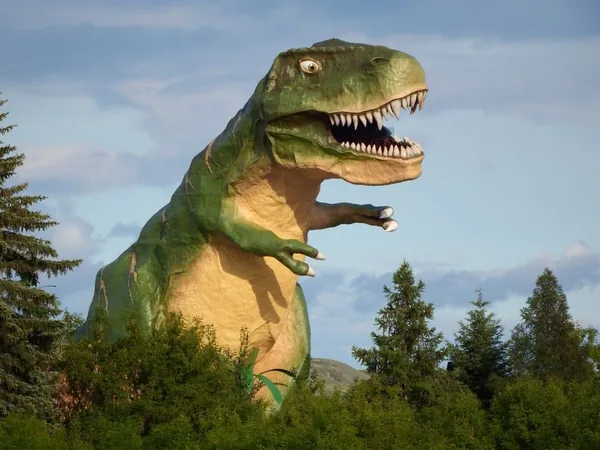
Groundbreaking Discovery: New Dinosaur Species with 30-Centimeter Claws Unearthed in Mongolia!
2025-03-25
Author: Benjamin
In an exciting revelation for the paleontological community, a team featuring Darla Zelenitsky, an associate professor at the University of Calgary, has unveiled a remarkable new dinosaur species discovered deep within the Gobi Desert of Mongolia. Known for its astonishing 30-centimeter-long claws, this dinosaur promises to reshape our understanding of Cretaceous fauna.
The incredible find occurred in 2012 during the construction of a water pipeline, when construction teams stumbled upon fossil remains. Prompted by this unexpected discovery, a specialized paleontological team quickly jumped into action to investigate the site, leading to the identification of the remains of the therizinosaur.
Zelenitsky described these creatures as the "sloths of the Cretaceous period," due to their peculiar morphology that seemed rather maladaptive in comparison to other dinosaurs. “They walked on two legs, boasted rotund bodies, long necks, and small heads, along with large arms that had typically three fingers armed with sizeable claws,” she explained in a recent interview. Most intriguingly, this specimen, now named **Duonychus** (which aptly translates to "two-clawed"), has evolved to possess only two fingers, along with those striking claws.
The discovery also revealed that one of the claws still bore a 12-centimeter-long fingernail, an exceptional find as such structures typically do not survive the fossilization process. "It’s usually a rarity since they’re not mineralized like bones, leading them to decay rapidly," Zelenitsky noted.
Full details of this groundbreaking discovery were published in the latest issue of *iScience*, emphasizing the challenges of bringing paleontological findings to light—often taking years or even decades. Zelenitsky, who has co-authored over 50 publications and played a crucial role in identifying feathered dinosaurs in North America, expressed her curiosity regarding the evolutionary alterations of Duonychus, particularly the transition from three toes to two.
"The species may have adapted to a specific dietary preference or feeding method, prompting this evolutionary change," Zelenitsky speculated. The powerful claws could have been essential tools for various tasks, such as digging or self-defense, making them formidable weapons in their ecological niche.
Interestingly, while this specimen is currently the only one found, researchers believe Duonychus likely roamed both Asia and North America, with an estimated weight of 250 kilograms and a height reaching three meters from tail to nose. Incredibly, about 50 new dinosaur species are identified each year, showcasing the rich and still unexplored history of these ancient creatures.
This discovery not only enriches our knowledge of ancient biodiversity but also highlights the ever-evolving narrative of life on Earth. The contributions of scientists like Zelenitsky shine a light on the dedication and curiosity that fuel paleontological research in our quest to understand our planet's prehistoric past.









 Brasil (PT)
Brasil (PT)
 Canada (EN)
Canada (EN)
 Chile (ES)
Chile (ES)
 Česko (CS)
Česko (CS)
 대한민국 (KO)
대한민국 (KO)
 España (ES)
España (ES)
 France (FR)
France (FR)
 Hong Kong (EN)
Hong Kong (EN)
 Italia (IT)
Italia (IT)
 日本 (JA)
日本 (JA)
 Magyarország (HU)
Magyarország (HU)
 Norge (NO)
Norge (NO)
 Polska (PL)
Polska (PL)
 Schweiz (DE)
Schweiz (DE)
 Singapore (EN)
Singapore (EN)
 Sverige (SV)
Sverige (SV)
 Suomi (FI)
Suomi (FI)
 Türkiye (TR)
Türkiye (TR)
 الإمارات العربية المتحدة (AR)
الإمارات العربية المتحدة (AR)